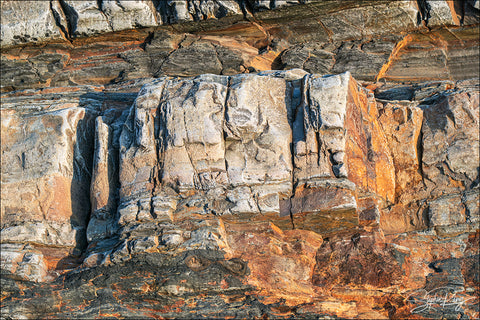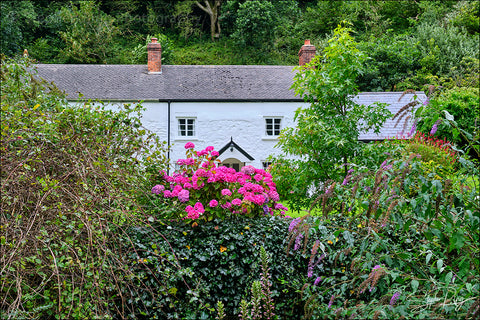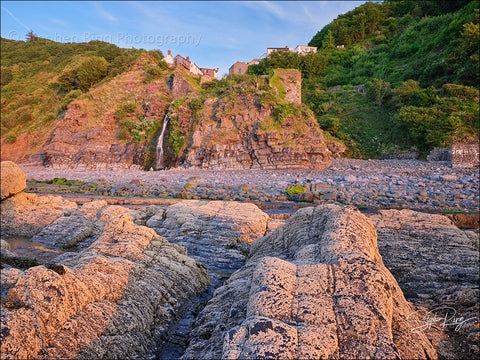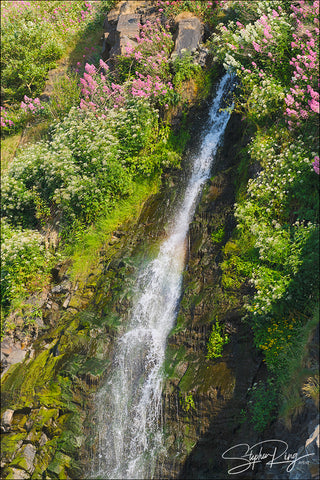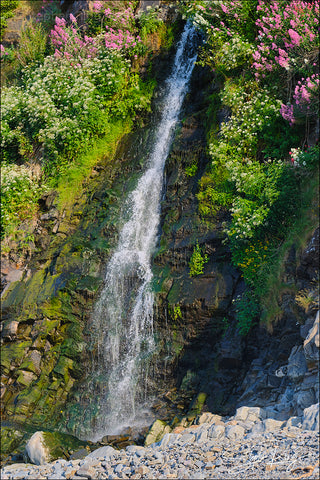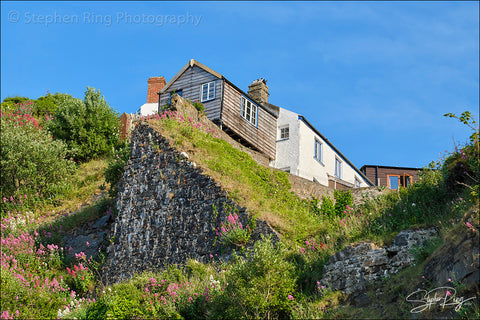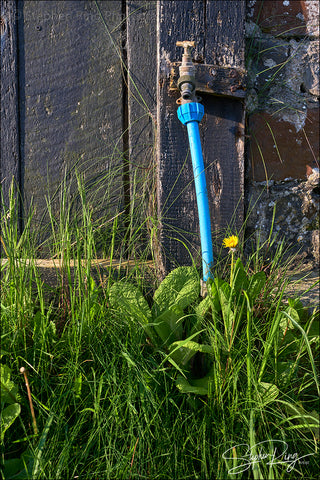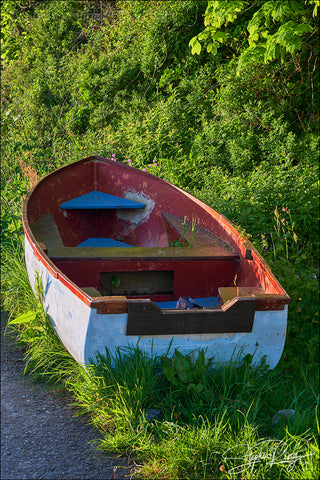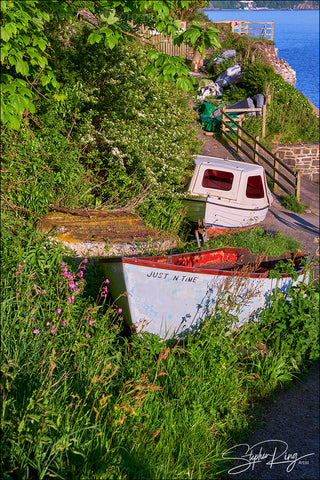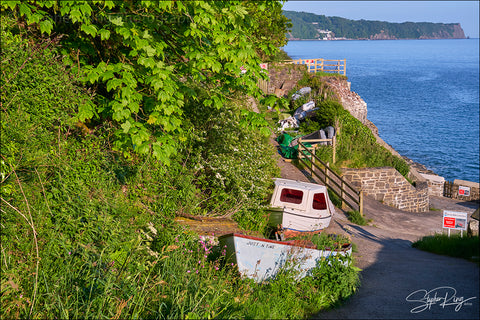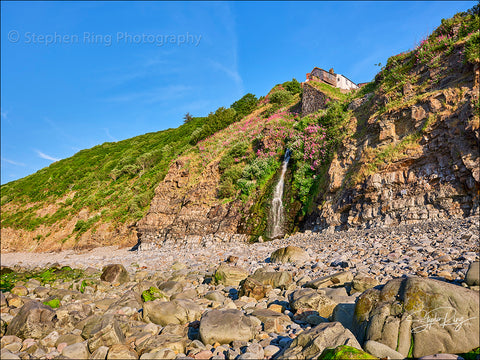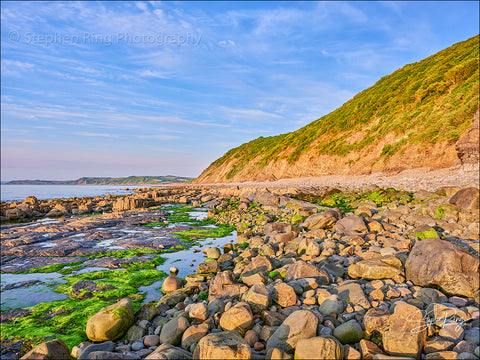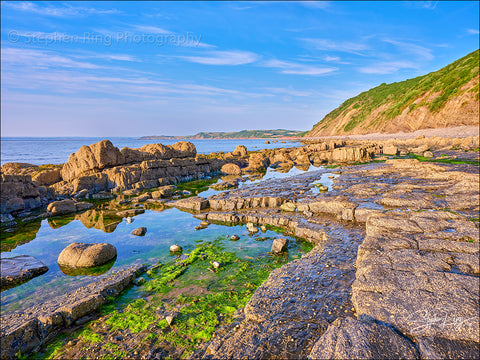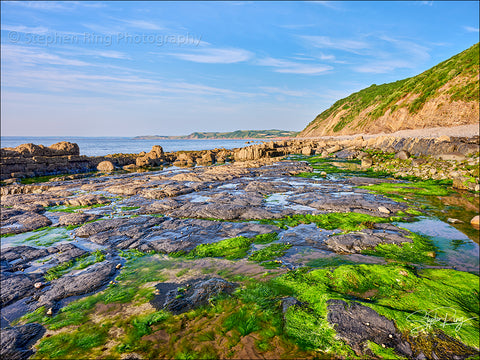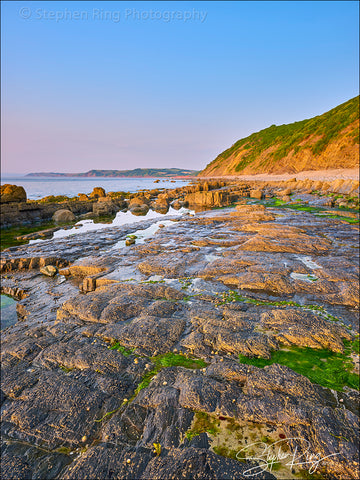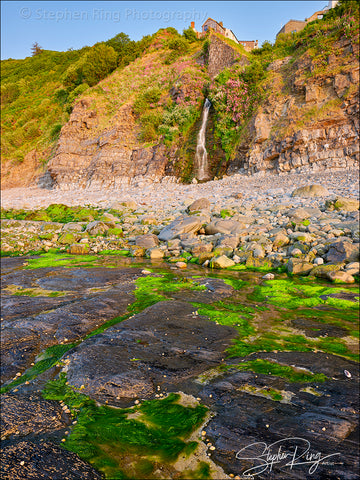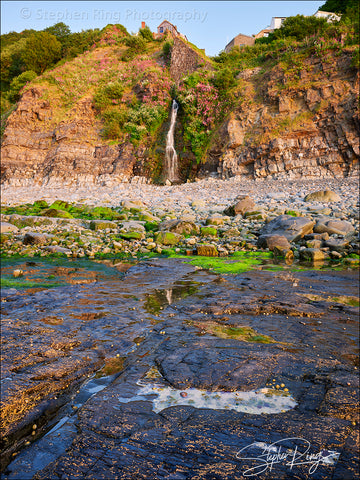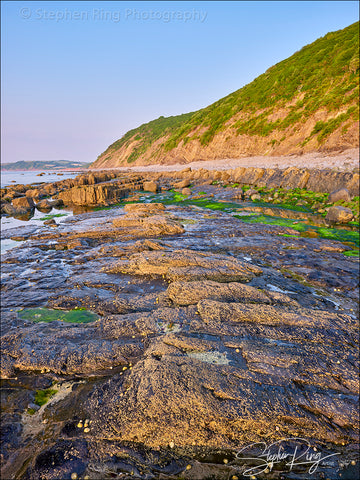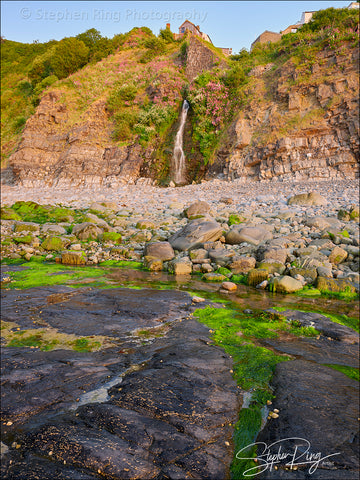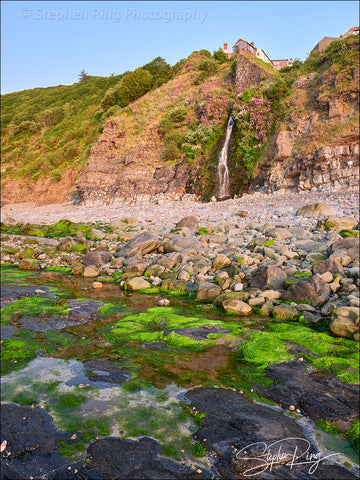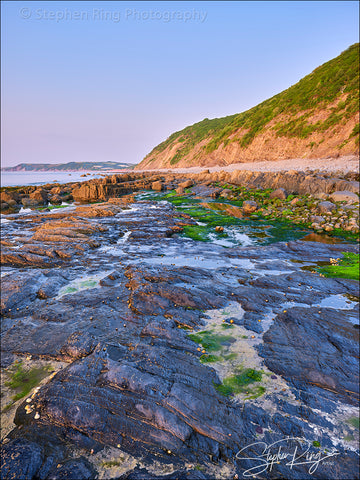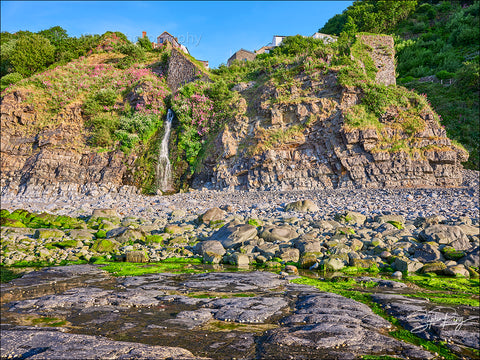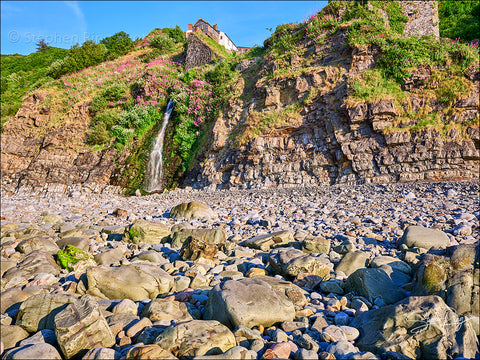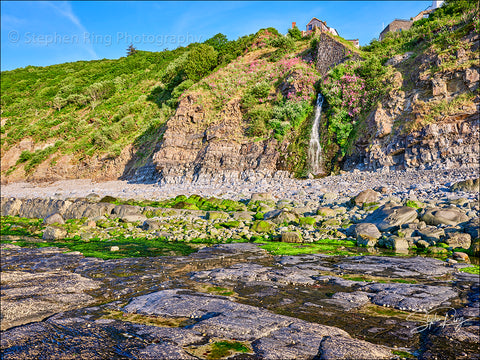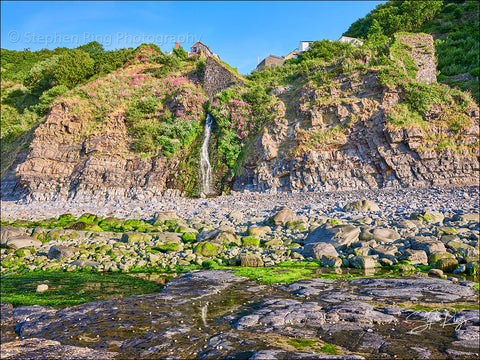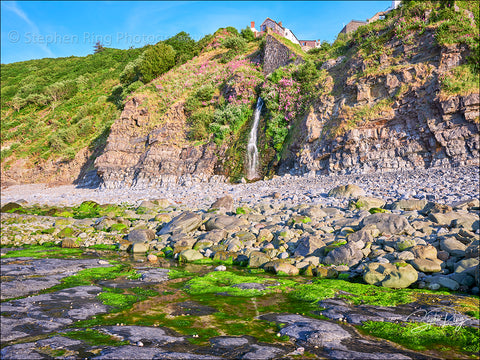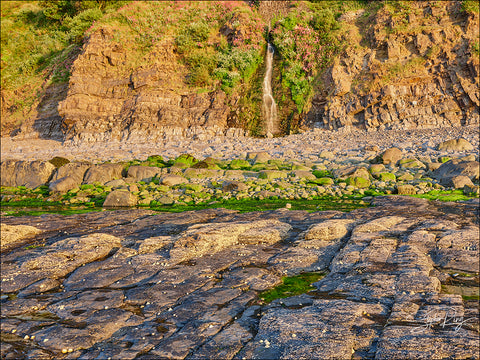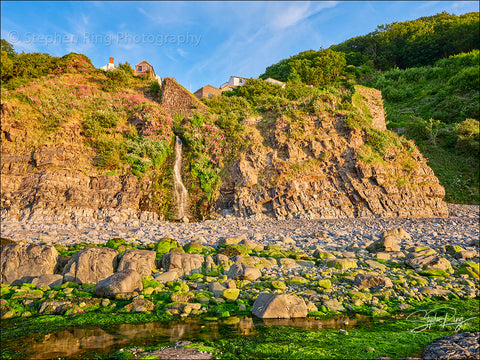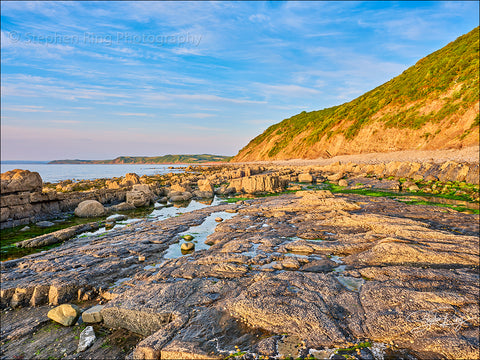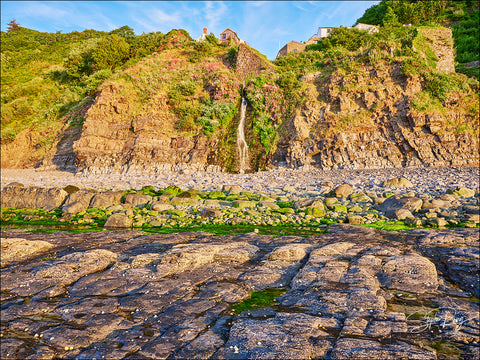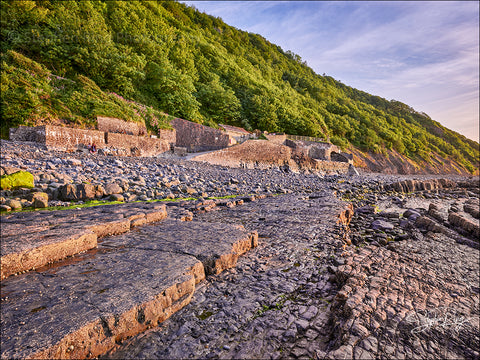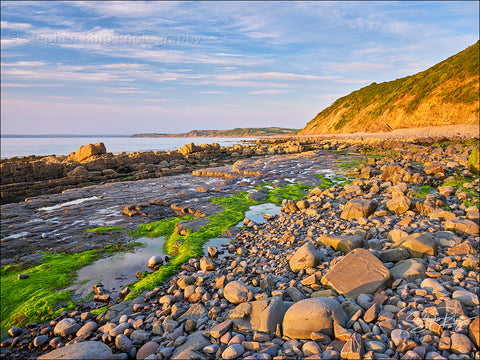Bucks Mills

Bucks Mills is a picturesque retreat which has been trapped in a bygone age. This charming hamlet is immune to the trappings of the 21st century and oozes a sense of history and adventure. Its beauty lies in its un-commercialised status with no pub or shop just the raw atmosphere of the coastal scenery and woodland that surrounds it. It is an ideal location for artists, photographers and families to explore and take in the ambience of such purity.
Its historic background dates back to the Spanish Armada when the survivors of a Spanish Galleon took refuge and settled here. It is said that local women married the survivors of the shipwreck forming a tight community and living in natural isolation. They were self-sufficient from fishing, agriculture and lime burning and were extremely hostile to newcomers. The name Braund also has a long association with Bucks Mills with everyone at one time being related to this family. How times have changed because today it is a haven to 2nd homes and holiday lets.
As you wind your way down the steep valley that leads to this quiet, undisturbed village you are enveloped by lush, green woodlands which create a canopy of protection. Sometimes the sunlight manages to pierce through and create a magical beam of light which shines brightly in your path. This spectacular woodland belongs to the National Woodland Trust and there are a host of pathways and walks to explore.
Ambling down the river valley you enter the village with its border of charming cottages until you meet the pathway at the top of the cliff which leads dramatically to the beach. From the top of the path you can survey the panorama with Clovelly on one side, the prominent red cliffs of Peppercombe on the other and Lundy standing proudly in the distance.
Half way down the steep beach path you come across the most intriguing building. Standing here is a quaint chalet which was once the Summer House of two artists Judith Ackland and Mary Stella Edwards. For many years, during the Summer they lived and worked here. Then after Judith’s death in the 1970’s it was locked up with its memories and left like a shrine, with all the contents left as if frozen in time.
Continuing down to the beach you arrive at the quay which was once frequented by fishing boats. The beach is now sprinkled with disused lime kilns and rusty winches, long been abandoned but reminding us of how industry used to be. With these relics of history remaining you can imagine how busy this quayside would once have been.
Exploring the beach is a must with its multitude of marine life, lobsters, crabs and plenty of fish to be caught. Clambering over the rocky beach you will come across plenty of rock pools and the fascinating rocky spit which looks as if its reaching out to Lundy and which legend says was built by the devil!!! To add to the overall beauty of this location there are coastal waterfalls which project off the cliffs and glisten in the sunlight and only add further splendor to this already magnificent place.
This fascinating village offers something for everyone be it a family walk, picnic, fishing or a swim. For me it’s the basic simplicity and the photographic opportunities which are available to me. The woodland walks and the lush green trees and flowers, the glory of the beach and its interesting geology and the waterfalls which splash against the rocks and trickle into the sea. What more could you ask for and all in one location.
Lovely place to visit 2024

